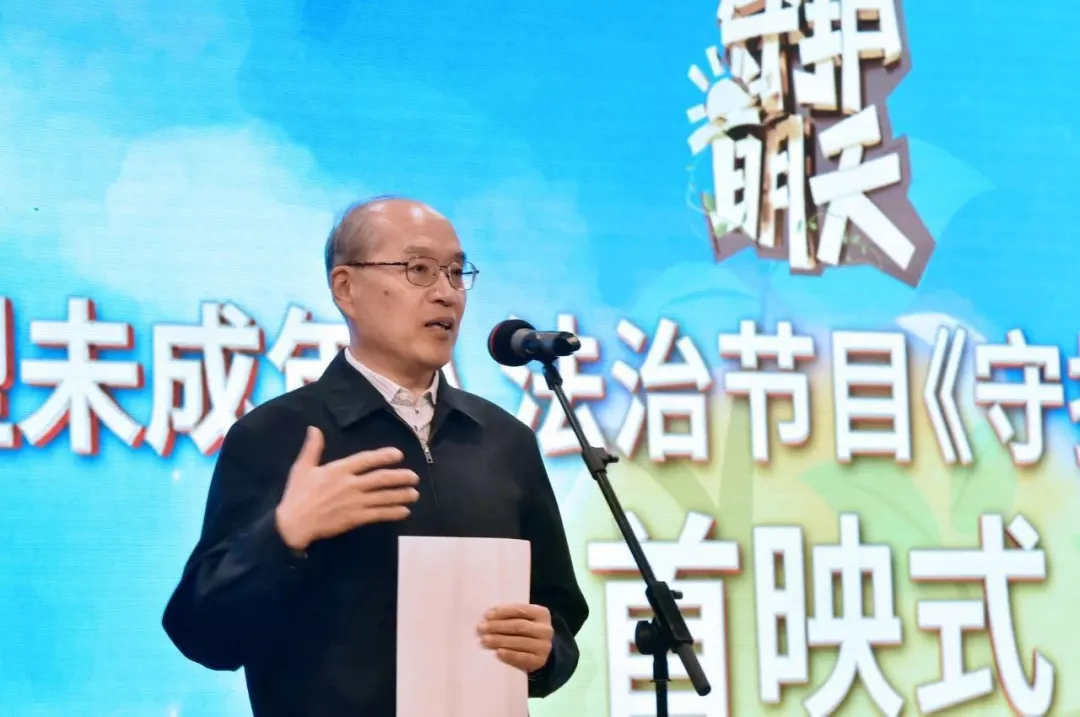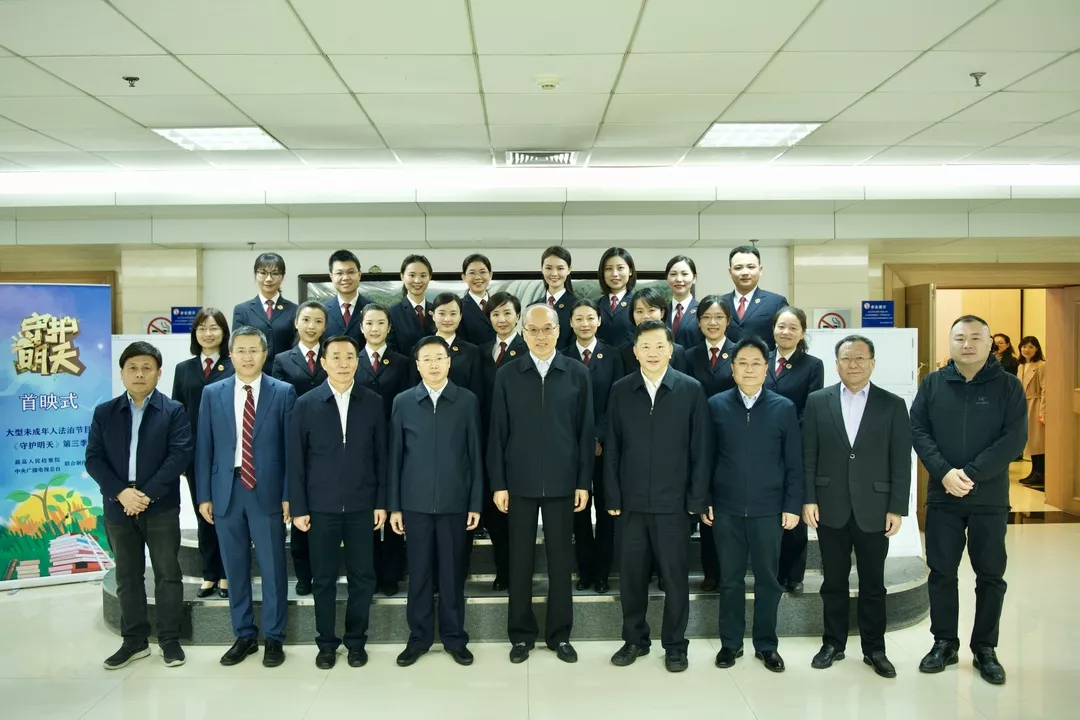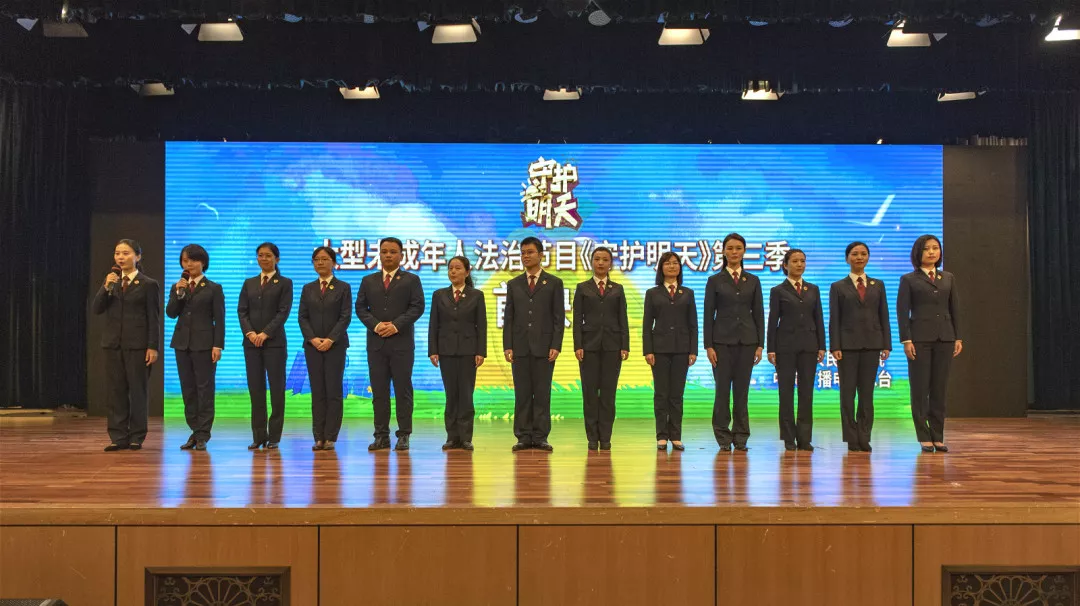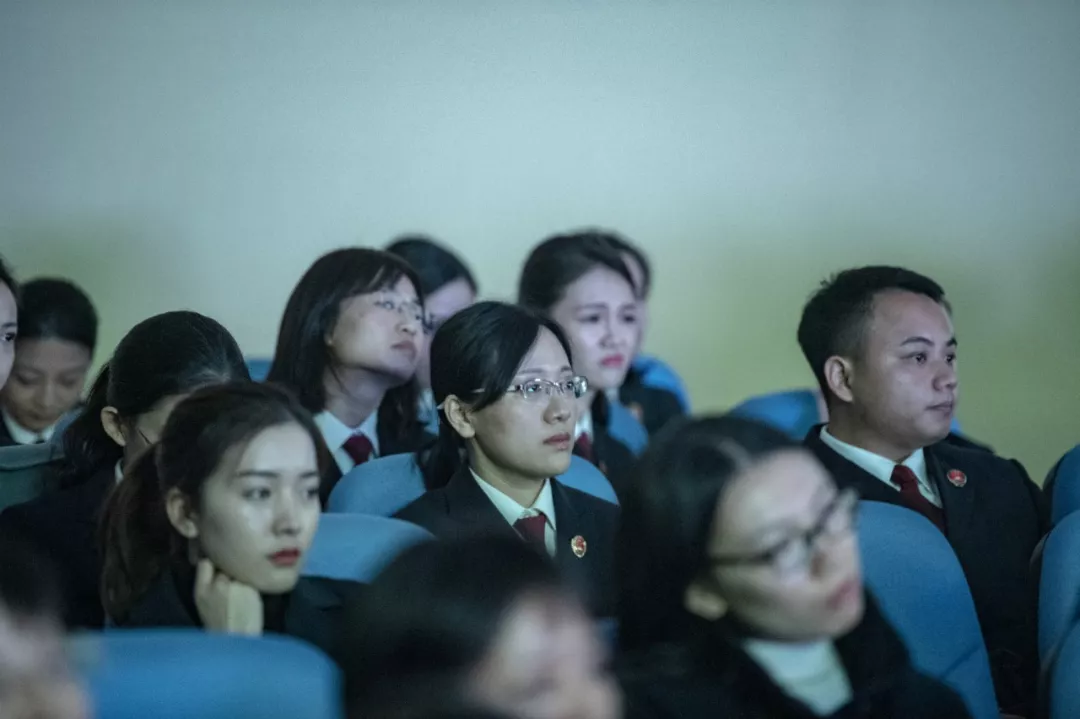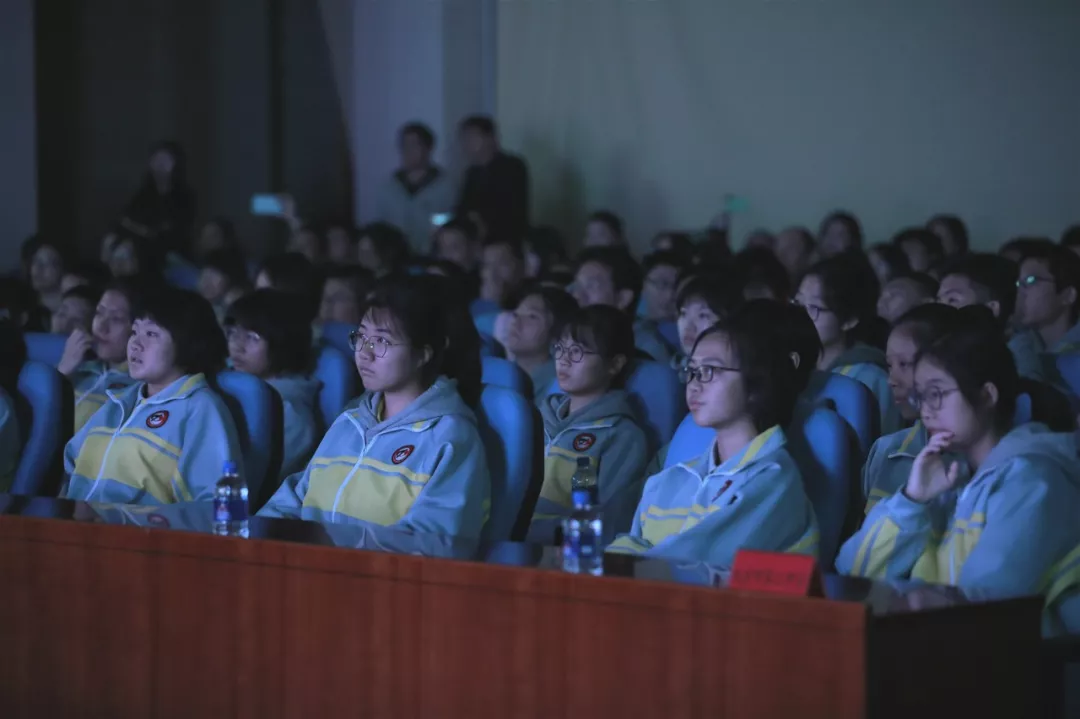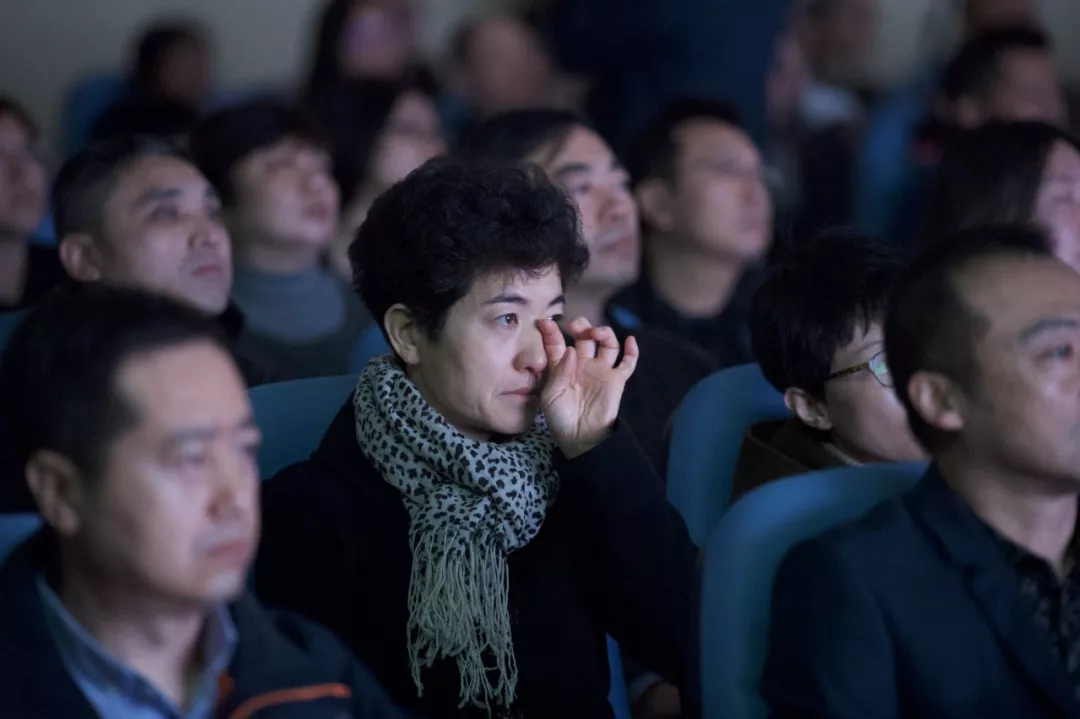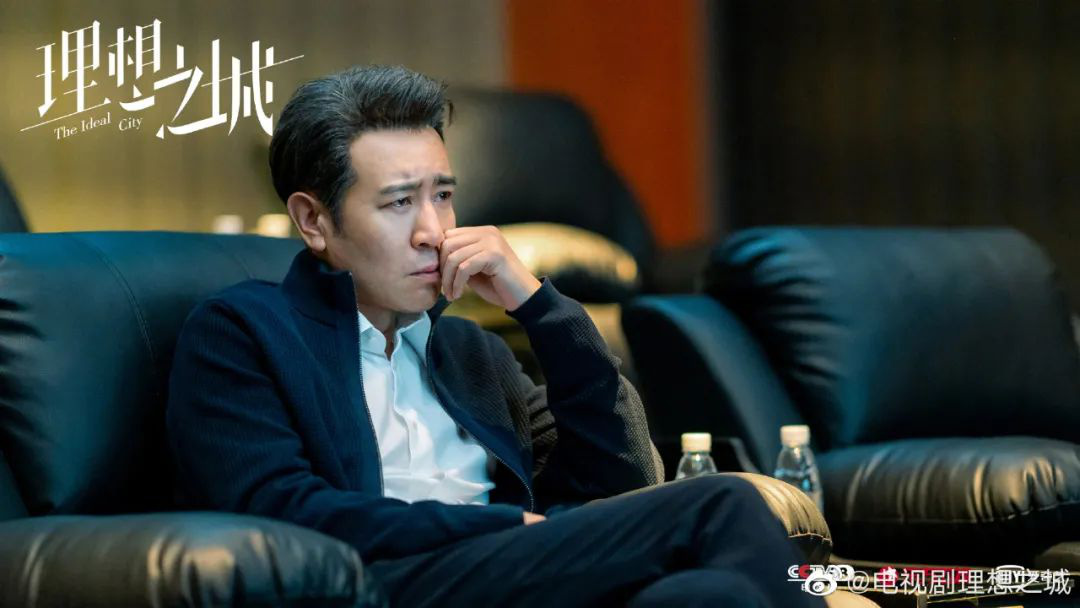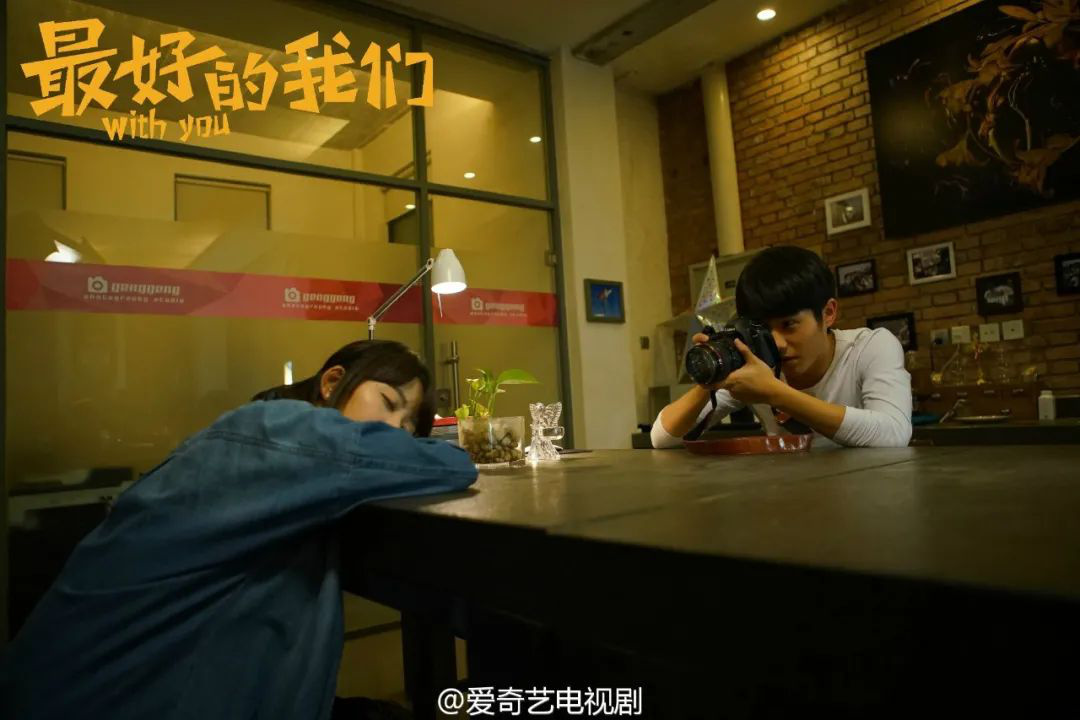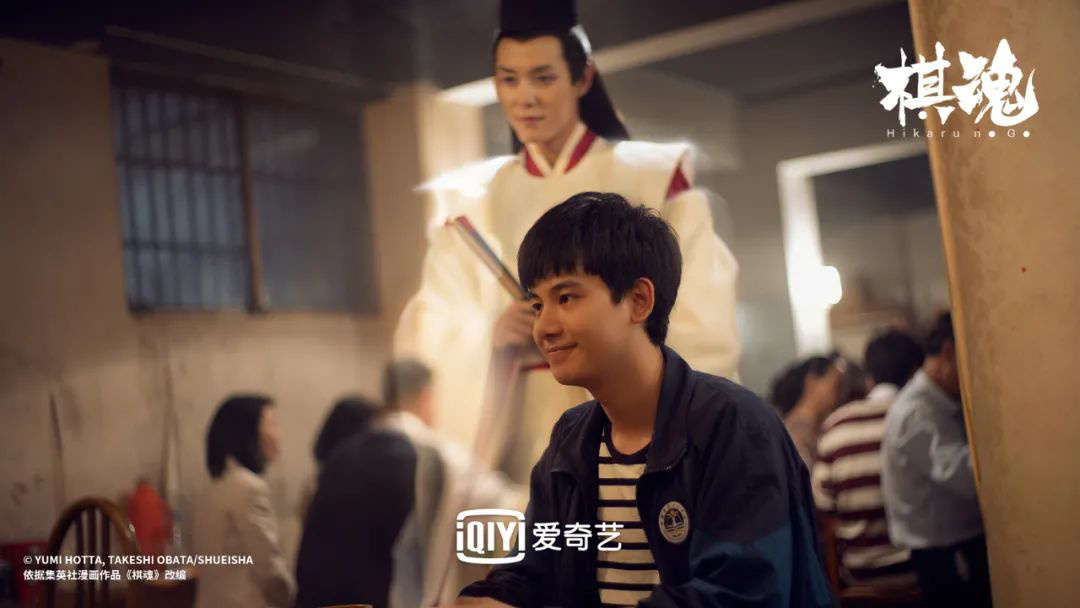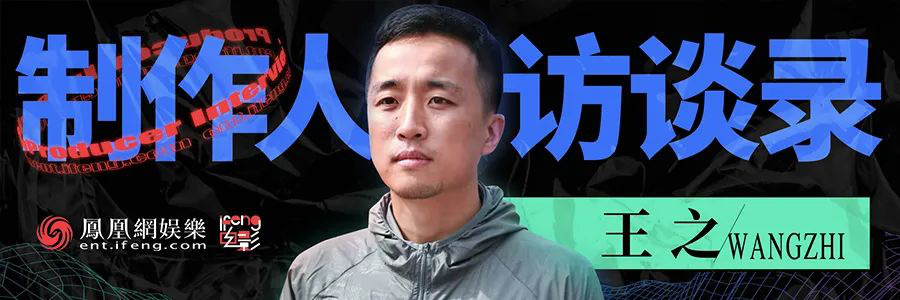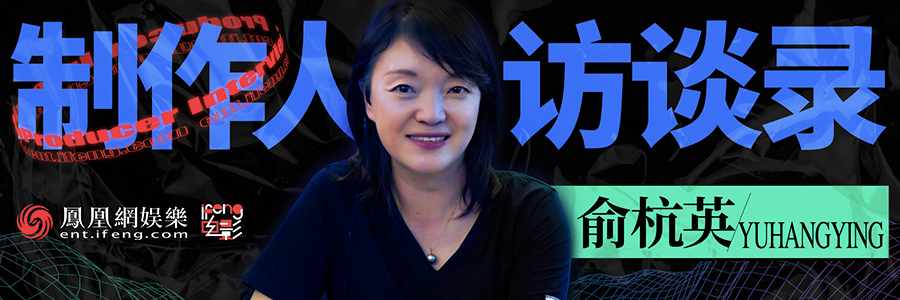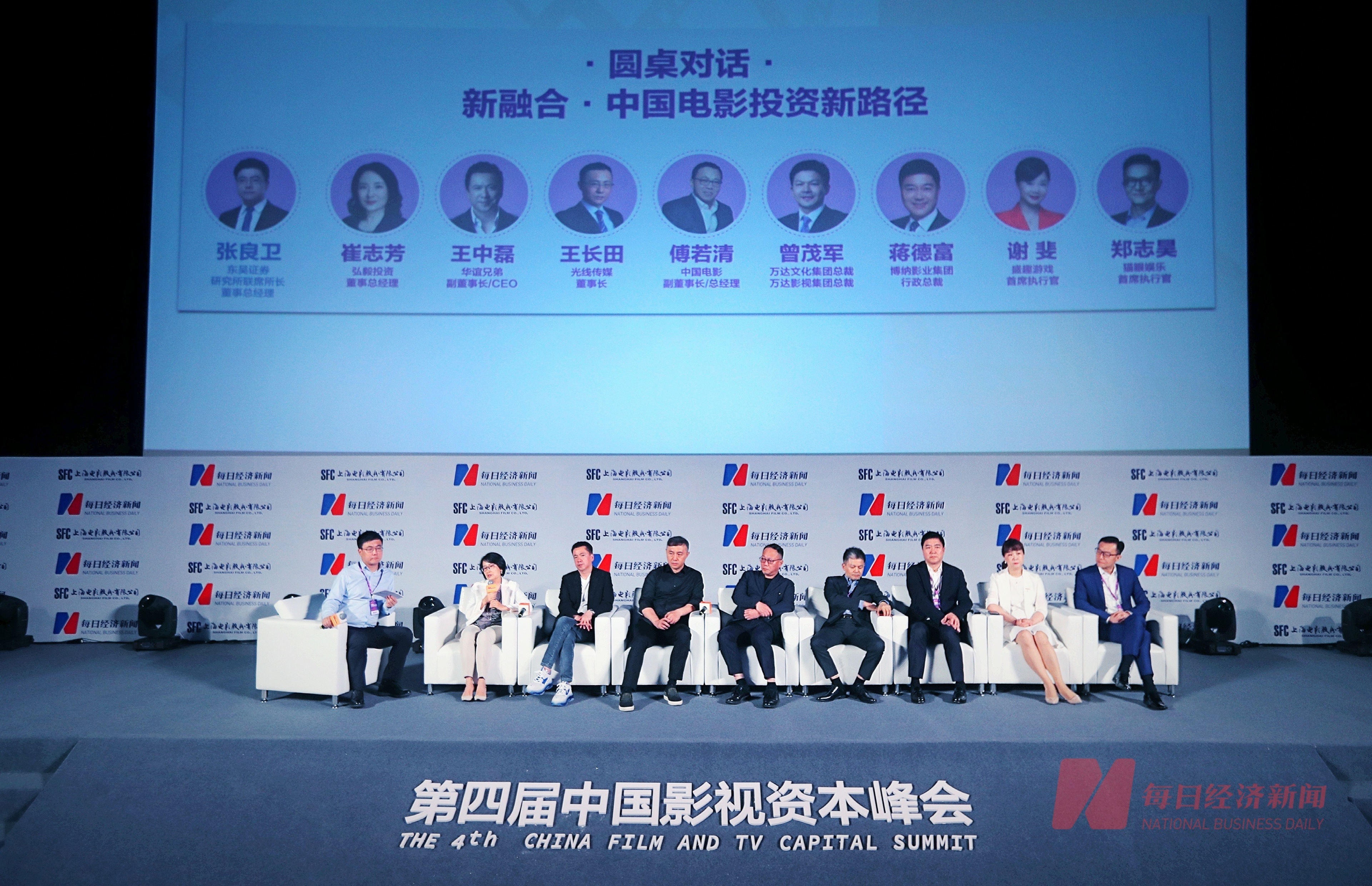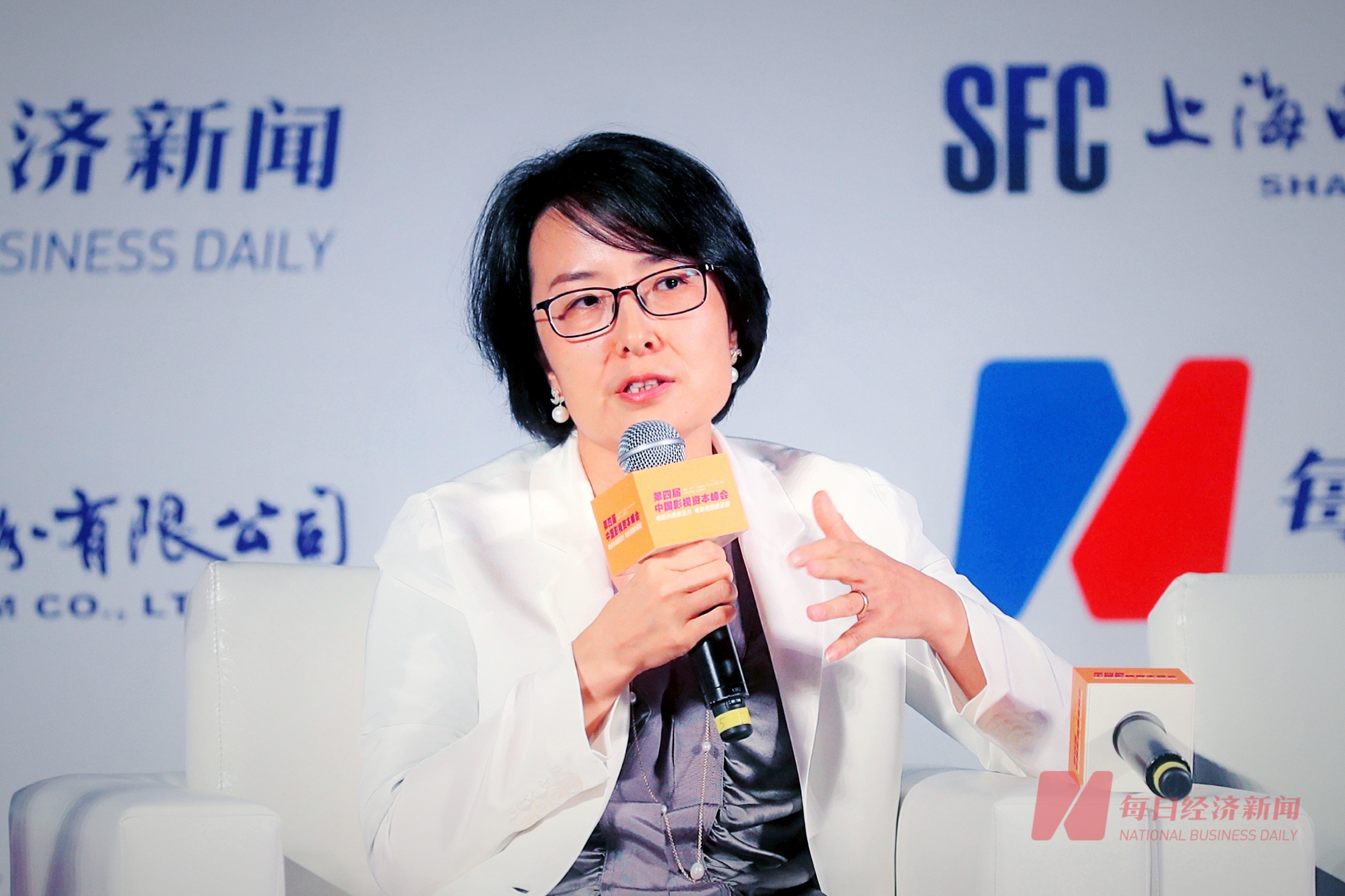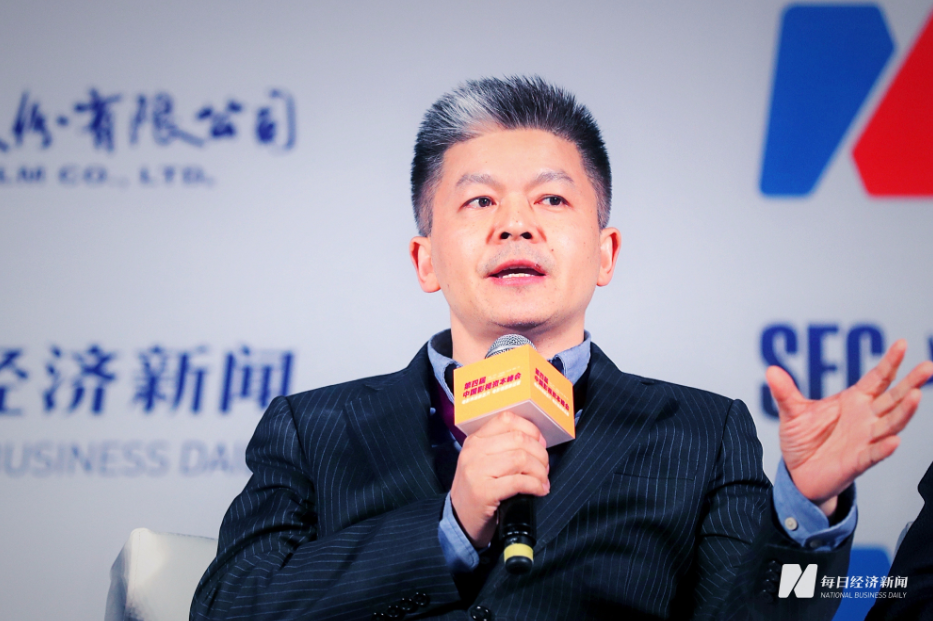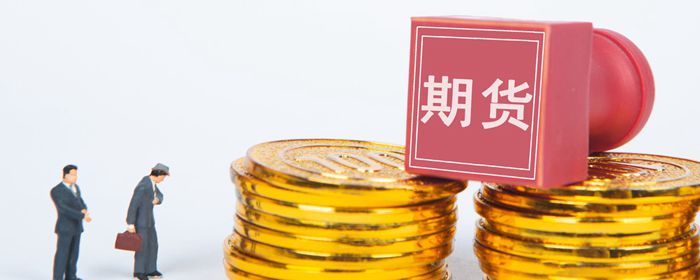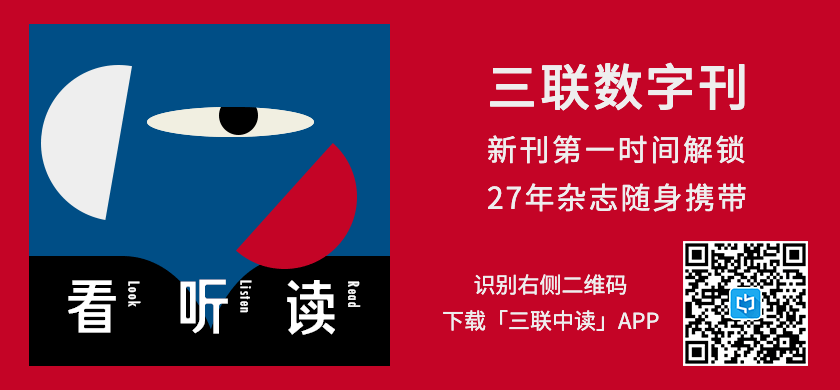Home > Economy > Media > Text
2013-08-07 13:38 Author:Guogui Wu Source:Titanium media

Titanium Media Note: Titanium Media recently published a series of exclusive articles on media transformation, including anxiety and reflection of traditional media people; Have the spirit and courage of new media people.
Recently, according to the titanium media, Liu Zhouwei, one of the founders of 21st century business herald, officially resigned, bid farewell to the newspaper industry that he founded and stuck to for more than ten years, and transferred to a newly established investment and cultural fund. Three years ago, he wrote in the 10th anniversary of 21st century business herald:
"If no accident, things like newspapers are ruined in the hands of our generation of journalists, which is no longer a suspense. We are still young, but the newspaper is old, and the elegy is faintly heard. It is the day of hastily resigning from the temple. What will the world be like if Jesus loses his church? Maybe there’s nothing worse than this? ? But if all you lose is the chain, you may enter a new beautiful world, where the news will not die and the people will be nirvana? ?”
This actually represents the voice of many people, including the old journalists who are still struggling in the traditional media, including the author of this article.
This article is an exclusive contribution from Guogui Wu, Dean of Xin ‘an Media Research Institute and news director of Xin ‘an Evening News. As a middle-aged journalist who has been sexually abusing in the newspaper industry for 20 years, when he finally realized that the so-called meeting the new is to change his life, he could only accept the reality. This is not so much a manuscript as a special declaration, saying goodbye to the past self, and the pain has to meet the rolling wave.
The following is the full text:
When the golden age of metropolis daily has passed, and now it is faced with the huge impact of new media, do metropolis daily people cling to the remnants and cling to the shortcomings, or do they keep pace with the times and admit the new? This is indeed a problem. I have been immersed in the paper media for nearly 20 years. My attitude is that we must jump out of the thinking limitations of the paper media, abandon our sense of superiority and make some necessary and even painful changes, which may lead us out of the predicament.
First, can it be "value reconstruction"?
Zhang Jinhai, a professor at the School of Journalism, Wuhan University, pointed out that the rise of new media and the decrease of the value of traditional media is a fact, but it does not mean that it will inevitably die out, and it can be reborn through "reconstructing value". That is to say, traditional media can use the quality of information to counter the information quantity of new media, realize value reconstruction, transfer the information quantity to new media, and focus on the quality of information. His formulation is novel and practical. But he only mentioned the transfer of "quantity", not the transfer of "speed". I think two transfers can be made.
The first is the transfer of information "quantity"
Running a thick newspaper with rich content and information was once the basic requirement of readers’ market for newspapers, and it was also the pride of urban newspapers. However, in the Internet era, this situation has undergone fundamental changes. No matter how many pages a newspaper has, no matter how thick it is, it can’t be compared with the massive information on the Internet. In addition, the distribution cost is upside down, and thick newspapers are obviously out of date or overreaching in the Internet age.
Therefore, at present, we should firmly establish the concept of "don’t fight for mass and fight for quality", transfer the amount of information to online media without hesitation, work hard on the quality of information, make the thick newspaper "thin" and the content "thick" ① (see the end of the article for references with digital subtitles. The same below). Through careful screening and editing, useful and quality information will be provided to readers, so that readers can spend the least time to see the information they want to see and need to see most.
At the same time of "thinning", we can also consider "thinning", that is, dividing it into different stacks, packaging it into volumes and selling it separately. Readers can choose to buy according to their own needs, without spending more money on a lot of things that they are not interested in at all. Readers who want to know about financial news can buy financial stacks, those who want to watch entertainment fashion news can buy entertainment stacks, and those who like social news can buy social stacks, which not only saves newspaper printing costs and distribution costs, but also saves readers’ reading time and audience’s attention.
The second is the "fast" transfer of information.
Like the mass content of information, the paper media can’t compete with the new media in the instant dissemination of information, but it can show our advantages in accuracy, authority and effectiveness.
With the rise of new media, especially social media, the information speed is beyond people’s imagination. Facebook has 800 million users worldwide, while Twitter has 150 million users, generating 1,000 Weibo messages every second, and users post more than 200 million Weibo messages every day. Sina Weibo can also produce 100 million pieces of content every day during peak hours.
Since the media era, everyone is a reporter. Although we have the largest editorial team in Anhui, you can’t be greater than the number of people from the media. They are always at the scene of the event, and they can publish what they have seen and heard to various new media platforms at any time. In the rapid release, we must admit that we can’t compete with new media.
However, we don’t fight for "fast" with online new media, which doesn’t mean that we are indifferent to this information. Instead, we should pay attention to and collect important information of online media in time, and use it as an information source to "deepen" and "sublimate" new media information through questioning, combing and supplementing, and in-depth interpretation, so as to change fragmented information on the Internet into complete information and "fast reading" on the Internet into "slow reading" of newspapers.
I’m not afraid of the new media express first, but I’m afraid of simply following behind to make the printed version of online media. Traditional media should organize fast and messy information fragments organically through "anti-fragmentation" operation, and after studying the content and direction of new media, set a new agenda to produce newer, more complete, more accurate and more valuable content than online media.
Second, can you "interact"?
The biggest advantage of social media is interactivity, but can’t paper media overcome the problem of poor interactivity? The answer is no.
First, strengthen the interaction of newspaper layout content.
Although almost all city newspapers now have "hotline news" or "interactive news" pages, the interactive consciousness of newspaper editors is still not optimistic. I specially checked all the evening newspapers and metropolis newspapers in Anhui, and found that there was no contact information of the editor or editorial department on the page. Then I would like to ask, readers have ideas, opinions and even new content to feedback about the information content published in your layout. Who do they talk to?
In this respect, some well-known metropolitan newspapers in China have done a good job. Every page of Xinmin Evening News and Dahe Daily has an editor’s mailbox, while Yangcheng Evening News and yanzhao metropolis daily have a department’s mailbox, while Yangzi Evening News has an editor’s mailbox and a department’s telephone number. Although this is a trivial matter and a detail, it reflects the interactive consciousness of a newspaper.
Today’s readers won’t read whatever you publish, as in the past. They have a strong desire to communicate and express, that is, to discuss and question under the news. Therefore, the interactivity of a newspaper can not only be reflected in one or two hotline news pages or interactive news pages, but should permeate every page, topic and even every important manuscript of the newspaper.
As someone said, in the all-media era, the newspaper can’t be signed and delivered for printing, and the reporter’s editing work is finished. Because our news articles may be being discussed on the Internet, if we don’t pay attention to and collect readers’ reactions and give feedback in the next day’s report in time, we will lose the opportunity to interact with readers.
The second is to provide an interactive platform for readers through activities.
The world’s best-selling newspaper, Japan’s Yomiuri Shimbun, has many secrets of success, one of which is the concept of "social newspaper". They organize various activities through newspapers to enhance readers’ interaction and experience and realize the "social" role. They organize as many as four or five hundred social promotion activities every year, the most influential of which is to invite six Nobel Prize winners to give speeches in Japan every year, which is not only welcomed by readers, but also becomes their service brand.
Many magazines are ahead of newspapers in this respect. There is a magazine called Entrepreneur in China. They are not just running a magazine, but using their own resource advantages, they have run dark horse races, dark horse clubs, young angels clubs and other products to provide services for entrepreneurs.
It’s time to set up a new concept of running a newspaper. Newspapers should not only be static news release machines, but also organize as many brand planning activities as possible, which have both social and economic benefits, and are both applauded and sold. In the new media environment, organizing social activities may be more important and urgent than simply releasing news.
The third is to realize cross-border interaction through social media.
When Weibo and other social media just emerged, they once made some traditional media people nervous, and some media even prohibited newspaper reporters from editing and publishing information in Weibo.
In fact, social media, as a new channel and platform for news dissemination, is the general trend, and it is impossible or ridiculous to restrict and prohibit media and media people from using social media. At present, almost all domestic paper media may have opened official Weibo on Sina and Tencent Weibo.
According to the 2012 Sina Media Weibo Report released by public opinion monitoring Office of People’s Daily Online, by the end of 2012, the total number of media Weibo certified by Sina Weibo had exceeded 110,000, including 17,221 media official Weibo and 92,945 media practitioners Weibo.
No socializing, no media. Metropolis Daily must be good at using social media to build its own cross-border interactive platform. The Weibo fans of Xin ‘an Evening News, Sina and Tencent, have now exceeded 800,000. It is necessary for us to study how to operate our content on the Weibo platform, give play to cross-border interaction and make up for the lack of timeliness and interactivity of newspapers.
Third, dare to open the newspaper?
Social media is decentralized and content manufacturing is open. Traditional media is produced by editorial department, while social media is produced by netizens. Netizens are both recipients and producers of information.
This can’t be done by traditional media. It’s impossible for our reporters and editors to leave work, and all the contents of the newspaper are adopted by readers. However, I think that some non-news pages can be "decentralized" like online media, and socialized production can be implemented to allow readers to participate and realize the opening of newspapers.
First, such as open content. This kind of attempt has been common in the print media in some developed countries.
The British "Guardian" implemented the practice of "opening the editorial department". They opened the news topics discussed by the editorial department to readers on the Internet and Twittet, and then determined the final topic of the newspaper according to the discussion and communication with readers. Through Twitter, readers can interact with reporters and editors, and readers and netizens have a full say in the production of content.
Second, for example, open pages.
In April 2012, when I attended the Asia Conference of the World Press Association in Indonesia, I visited the Java Post. They had one or two pages every day, mainly about young people. They recruited readers from the society to be temporary reporters’ editors, from topic selection to interview to layout production, which was completed by readers under the guidance of newspaper editors. Although this open mode of running a newspaper can’t solve the fundamental problem of poor interaction of print media, it is certainly beneficial to establish the brand of the newspaper.
There is also an openness called "cooperation and outsourcing". Qiu Yong made it very clear in the article "In addition to waiting for death, editors of traditional media can also do this":
"The productivity of new media and self-media has far exceeded that of traditional media. It is better to divert water into the canal than to dam it. The cost of producing a high-quality report by traditional media alone is too high to be a business, while the cost of cooperation and outsourcing is greatly reduced. Therefore, the value of editors lies in their ability to identify good things with high taste, to find good authors in the market and to provide value-added content. When an editor opens a topic meeting, he does not necessarily just send a topic to the reporter, but determines the topic and then finds the author who is most suitable for writing. " ③
This may have subverted our newspaper operation mode, but whether you like it or not, it will definitely come. Last month, we may all have seen a news that the Chicago Sun Times laid off 28 people in the entire photography department, including journalists who won Pulitzer Prize twice.
The reason they gave is that with the diversification of information dissemination channels, live photos and videos taken by ordinary people with digital cameras or mobile phones are getting more and more attention from the media. In many unexpected news events, the first-hand image materials taken by ordinary people at the scene are often more timely than those taken by media photographers. Therefore, the photojournalist department should be cut, freelance photographers should be hired, and more videos should be used to report news.
Fourth, do you want to change "readers" into "users"?
Wei Wu Hui, School of Media and Design, Shanghai Jiaotong University, recently expressed a view in an interview:
The crisis of traditional media does not come from new media. Change begins with finding your users. The media must be productized, and the media that still emphasizes "readers" is not far from death.
He believes that the media that still emphasizes "readers" still lived 20 years ago. Readers will not pay. They will spend at most one or two yuan to buy you a newspaper, and then rely on advertisers to survive. But now this way of living has been broken, and the media that still emphasizes "readers" will only die.
To turn readers into users, we must establish two kinds of consciousness:
The first is service awareness.
Our newspaper calls readers, radio calls listeners, and TV calls viewers, but online media calls them "users". Although the targets are all audiences, traditional media emphasizes reading and listening, so "content is king", while new media emphasizes service, so service is king and experience is king. We must change our ideas. While insisting that content is king, we should also emphasize "service is king" and "experience is king".
This is because a newspaper, no matter how good your news is, your experience is poor, interaction is poor and participation is low, it can’t create value. Users may not only watch your news, but also enjoy various experiences and services. Newspapers should concentrate on news, but also mobilize all resources to serve. If you can use your own superior resources and brand effect, you can carry out various training, consulting, education, financial management and other activities.
The second is product awareness.
Products have users, and users will pay. The same is the "ingenious consultation meeting". At first, Qilu Evening News, like us, was a large-scale news planning. Later, they managed this activity as a brand product, and the readers became users. Only the ingenious consultation meeting every year can bring millions of economic benefits, or even more.
We discussed earlier that newspapers should be good at organizing activities to enhance interactivity, but once these service activities are recognized by readers or the market, they should be good at turning them into service products, and many paper media often stop there. Xin ‘an Evening News has carried out and planned many service activities that are widely welcomed by readers, such as "Through Train for College Entrance Examination", "Xin ‘an People’s Lecture Hall", "Xin ‘an Love Number" and various summit forums, but few of them have become newspaper service products in the end.
The success of Entrepreneur magazine, which has always been talked about by Wei Wuhui, lies in that when they find that service activities attract specific readers, they will turn readers into users, turn service activities into service products and sell them to users, with tips for small and shallow services (sometimes some free services) and higher fees for large and in-depth services. In Wei Wuhui’s words, there are no advertisers here, and they directly exchange service products for money.
Poor product awareness, we may not feel it ourselves after living in traditional media for many years. Wang Lei worked in Southern Metropolis Daily and Yunnan Information Daily for 13 years. In 2012, he went to work in Tencent Weibo. From the chief reporter of the paper media to the deputy editor-in-chief of the paper media, and then to the director of content operation in Weibo, Wang Lei was deeply touched: "The traditional media has a great difference in product awareness, lacks awareness and tools, and pays insufficient attention to the product evolution, design and user experience of the media itself. In my work experience in paper media, there is almost no systematic product concept. " ④
5. Do you understand what is the "turn" of digital transformation?
In recent years, due to the rush out of new media, the advertising and audience loss of traditional media is more serious, and traditional media have put forward digital transformation strategies one after another, but most of them suffer from the problem of quick success and instant benefit in the process of transformation, focusing only on acquiring advertisers and ignoring how to acquire audiences.
Although everyone rushed to run websites and be clients, few of them made money. The reason is simple, no matter from the capital investment, talent and technical strength and operating mechanism, traditional media can’t compete with network companies. Many traditional media have been running websites for a few years, and the content construction has not been accepted by users. They are clamoring for them to grab advertisements and make money. In the end, haste makes waste.
Hu Shuli, editor-in-chief of Caixin Media and dean of the School of Communication and Design of Sun Yat-sen University, has a point of view: transformation is not a transition, but how the news itself is carried forward on the new media platform. If we agree that the digital transformation of paper media is a "transformation" rather than a "transition", then our greatest resource and advantage is still editing resources, that is, content resources. The key to the transformation should be how to transform newspaper readers into digital users when readers’ reading habits change.
The Wall Street Journal currently has 640,000 iPad users, while their digital subscribers reached 537,000 in 2011, and the Financial Times had 267,000 digital users by the end of 2011. By the end of September, 2012, the number of online paying users of The New York Times Company has reached 566,000, which is about half of the printed circulation. In the case of negative growth in their printing business, due to the growth of digital subscribers, the distribution income has increased again. According to Bloomberg News, The New York Times’s total online and offline subscription revenue reached 768.3 million US dollars by the end of 2012, which was 52.9 million US dollars more than advertising revenue, making it the largest revenue source. This is the first time that The New York Times’s total subscription revenue exceeded advertising revenue.
Therefore, taking content as the king, competing for and acquiring users, and successfully transforming newspaper subscribers into digital subscribers, this is the basic construction of all-media construction of paper media and the proper meaning of digital transformation. (This article exclusively launches titanium media)
Note:
(1) Ma Guocang’s "Five Major Factors, such as New Media, Will End the Times of Thick Newspaper" was published in China Press and Publication on June 7, 2013.
(2) Mu Baiwan’s Taking Nandu as an Example to See the Pain and Future of Metropolis Daily’s Transformation, published in Titanium Media.
(3) Qiu Yong’s "In addition to waiting for death, editors of traditional media can also do this" is published on the Internet.
④ Wang Lei’s "Changing not only work but also ideas" was published in China Reporter on June 9, 2013.
(This article was published by the author @ Guogui Wu authorized by Titanium Media, and edited by Titanium Media. Please indicate the source and the link to this article.)
When the golden age of metropolis daily has passed, and now it is faced with the huge impact of new media, do metropolis daily people cling to the remnants and cling to the shortcomings, or do they keep pace with the times and admit the new? This is indeed a problem. I have been immersed in the paper media for nearly 20 years. My attitude is that we must jump out of the thinking limitations of the paper media, abandon our sense of superiority and make some necessary and even painful changes, which may lead us out of the predicament.
First, can it be "value reconstruction"?
Zhang Jinhai, a professor at the School of Journalism, Wuhan University, pointed out that the rise of new media and the decrease of the value of traditional media is a fact, but it does not mean that it will inevitably die out, and it can be reborn through "reconstructing value". That is to say, traditional media can use the quality of information to counter the information quantity of new media, realize value reconstruction, transfer the information quantity to new media, and focus on the quality of information. His formulation is novel and practical. But he only mentioned the transfer of "quantity", not the transfer of "speed". I think two transfers can be made.
The first is the transfer of information "quantity"
Running a thick newspaper with rich content and information was once the basic requirement of readers’ market for newspapers, and it was also the pride of urban newspapers. However, in the Internet era, this situation has undergone fundamental changes. No matter how many pages a newspaper has, no matter how thick it is, it can’t be compared with the massive information on the Internet. In addition, the distribution cost is upside down, and thick newspapers are obviously out of date or overreaching in the Internet age.
Therefore, at present, we should firmly establish the concept of "don’t fight for mass and fight for quality", transfer the amount of information to online media without hesitation, work hard on the quality of information, make the thick newspaper "thin" and the content "thick" ① (see the end of the article for references with digital subtitles. The same below). Through careful screening and editing, useful and quality information will be provided to readers, so that readers can spend the least time to see the information they want to see and need to see most.
At the same time of "thinning", we can also consider "thinning", that is, dividing it into different stacks, packaging it into volumes and selling it separately. Readers can choose to buy according to their own needs, without spending more money on a lot of things that they are not interested in at all. Readers who want to know about financial news can buy financial stacks, those who want to watch entertainment fashion news can buy entertainment stacks, and those who like social news can buy social stacks, which not only saves newspaper printing costs and distribution costs, but also saves readers’ reading time and audience’s attention.
The second is the "fast" transfer of information.
Like the mass content of information, the paper media can’t compete with the new media in the instant dissemination of information, but it can show our advantages in accuracy, authority and effectiveness.
With the rise of new media, especially social media, the information speed is beyond people’s imagination. Facebook has 800 million users worldwide, while Twitter has 150 million users, generating 1,000 Weibo messages every second, and users post more than 200 million Weibo messages every day. Sina Weibo can also produce 100 million pieces of content every day during peak hours.
Since the media era, everyone is a reporter. Although we have the largest editorial team in Anhui, you can’t be greater than the number of people from the media. They are always at the scene of the event, and they can publish what they have seen and heard to various new media platforms at any time. In the rapid release, we must admit that we can’t compete with new media.
However, we don’t fight for "fast" with online new media, which doesn’t mean that we are indifferent to this information. Instead, we should pay attention to and collect important information of online media in time, and use it as an information source to "deepen" and "sublimate" new media information through questioning, combing and supplementing, and in-depth interpretation, so as to change fragmented information on the Internet into complete information and "fast reading" on the Internet into "slow reading" of newspapers.
I’m not afraid of the new media express first, but I’m afraid of simply following behind to make the printed version of online media. Traditional media should organize fast and messy information fragments organically through "anti-fragmentation" operation, and after studying the content and direction of new media, set a new agenda to produce newer, more complete, more accurate and more valuable content than online media.
Second, can you "interact"?
The biggest advantage of social media is interactivity, but can’t paper media overcome the problem of poor interactivity? The answer is no.
First, strengthen the interaction of newspaper layout content.
Although almost all city newspapers now have "hotline news" or "interactive news" pages, the interactive consciousness of newspaper editors is still not optimistic. I specially checked all the evening newspapers and metropolis newspapers in Anhui, and found that there was no contact information of the editor or editorial department on the page. Then I would like to ask, readers have ideas, opinions and even new content to feedback about the information content published in your layout. Who do they talk to?
In this respect, some well-known metropolitan newspapers in China have done a good job. Every page of Xinmin Evening News and Dahe Daily has an editor’s mailbox, while Yangcheng Evening News and yanzhao metropolis daily have a department’s mailbox, while Yangzi Evening News has an editor’s mailbox and a department’s telephone number. Although this is a trivial matter and a detail, it reflects the interactive consciousness of a newspaper.
Today’s readers won’t read whatever you publish, as in the past. They have a strong desire to communicate and express, that is, to discuss and question under the news. Therefore, the interactivity of a newspaper can not only be reflected in one or two hotline news pages or interactive news pages, but should permeate every page, topic and even every important manuscript of the newspaper.
As someone said, in the all-media era, the newspaper can’t be signed and delivered for printing, and the reporter’s editing work is finished. Because our news articles may be being discussed on the Internet, if we don’t pay attention to and collect readers’ reactions and give feedback in the next day’s report in time, we will lose the opportunity to interact with readers.
The second is to provide an interactive platform for readers through activities.
The world’s best-selling newspaper, Japan’s Yomiuri Shimbun, has many secrets of success, one of which is the concept of "social newspaper". They organize various activities through newspapers to enhance readers’ interaction and experience and realize the "social" role. They organize as many as four or five hundred social promotion activities every year, the most influential of which is to invite six Nobel Prize winners to give speeches in Japan every year, which is not only welcomed by readers, but also becomes their service brand.
Many magazines are ahead of newspapers in this respect. There is a magazine called Entrepreneur in China. They are not just running a magazine, but using their own resource advantages, they have run dark horse races, dark horse clubs, young angels clubs and other products to provide services for entrepreneurs.
It’s time to set up a new concept of running a newspaper. Newspapers should not only be static news release machines, but also organize as many brand planning activities as possible, which have both social and economic benefits, and are both applauded and sold. In the new media environment, organizing social activities may be more important and urgent than simply releasing news.
The third is to realize cross-border interaction through social media.
When Weibo and other social media just emerged, they once made some traditional media people nervous, and some media even prohibited newspaper reporters from editing and publishing information in Weibo.
In fact, social media, as a new channel and platform for news dissemination, is the general trend, and it is impossible or ridiculous to restrict and prohibit media and media people from using social media. At present, almost all domestic paper media may have opened official Weibo on Sina and Tencent Weibo.
According to the 2012 Sina Media Weibo Report released by public opinion monitoring Office of People’s Daily Online, by the end of 2012, the total number of media Weibo certified by Sina Weibo had exceeded 110,000, including 17,221 media official Weibo and 92,945 media practitioners Weibo.
No socializing, no media. Metropolis Daily must be good at using social media to build its own cross-border interactive platform. The Weibo fans of Xin ‘an Evening News, Sina and Tencent, have now exceeded 800,000. It is necessary for us to study how to operate our content on the Weibo platform, give play to cross-border interaction and make up for the lack of timeliness and interactivity of newspapers.

